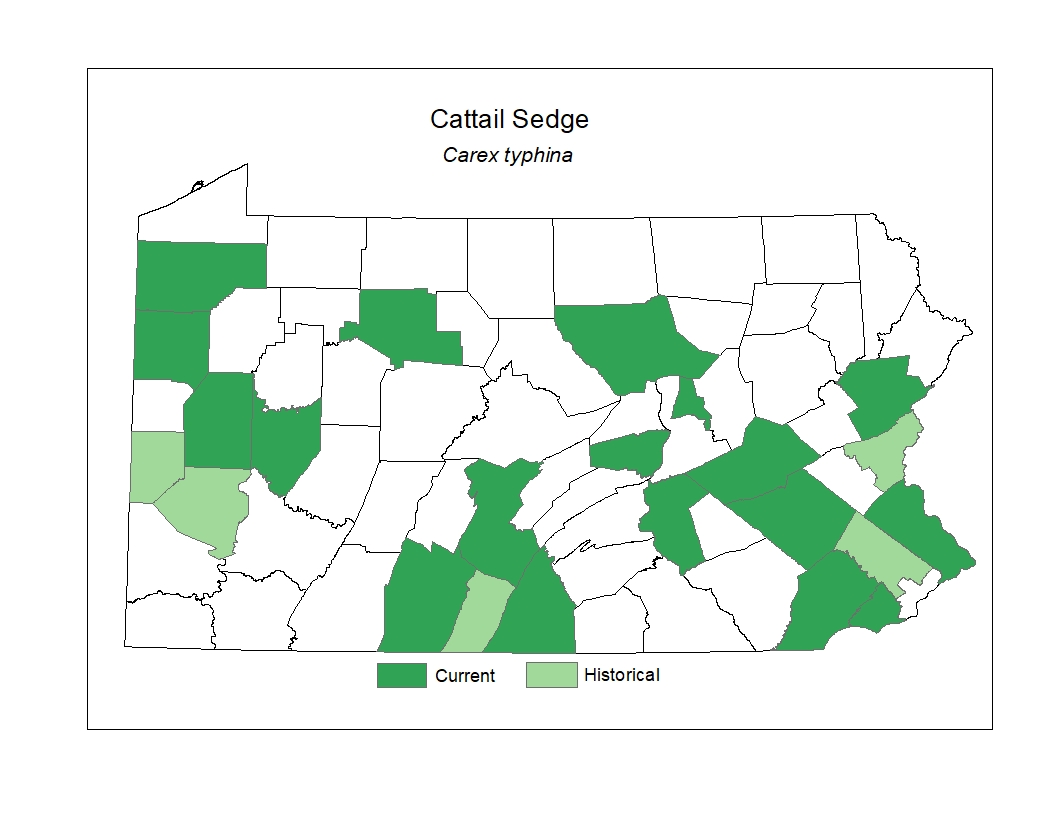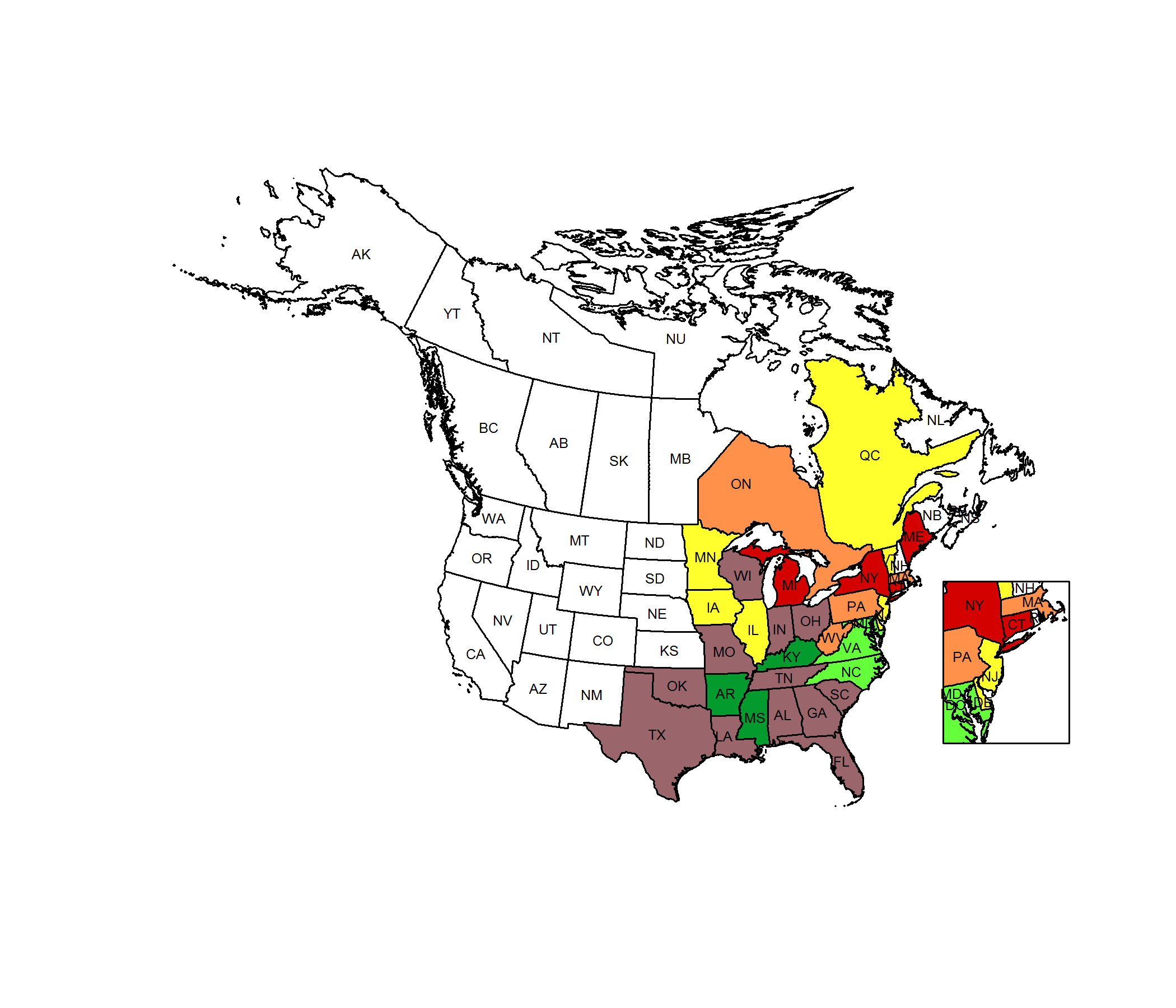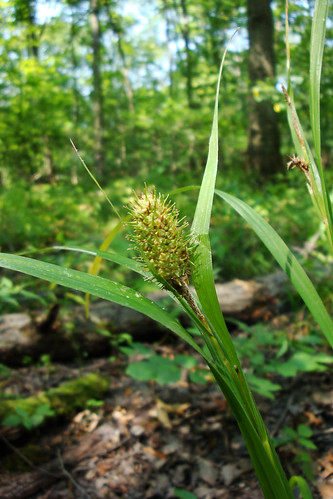 Species Factsheets
Species Factsheets
Carex typhina
Cat-tail Sedge
State Status: Pennsylvania Endangered (PE)
PBS Status: Pennsylvania Threatened (PT)
Federal Status:
Global Rank: G5
![]() rank interpretation
rank interpretation
State Rank: S2
Did You Know?
There are over 600 species in the genus Carex that are broken into sections; this particular species belongs to the Squarrosae section.
Description
Cat-tail sedge (Carex typhina) is a grass-like perennial that grows from 30-90cm tall. The leaves are long and narrow, with parallel veins and a pronounced midrib. The lowest leaves grow from a point on the stem well above the ground, rather than at the base of the stem, a feature described as aphyllopody. Flowers are small, simple, and unisexual, grouped in a spike-like head at the apex of the stem. Pistillate (female) flowers form a cylindrical head above the smaller cluster of staminate (male) flowers.
Rank Justification
Imperiled in the nation or state because of rarity due to very restricted range, very few populations (often 20 or fewer), steep declines, or other factors making it very vulnerable to extirpation from the nation or state.
Habitat
Cat-tail sedge tolerates shade and acidic soil, but requires very moist conditions. It grows in wet woods, along occasionally flooding streams, and in marshes from Québec south to Florida and Texas.
Survey Dates
Fruits mid June - September
Distribution

Threats
Cat-tail sedge populations have been harmed most by disturbance and alteration of their wet, wooded habitats, whether in the form of logging, draining for use in agriculture or development, or changes created by flood control regimes.
Management
Conservation of cat-tail sedge will require preservation and protection of its wetland habitat, particularly wooded areas along rivers. Prevention of wetland draining and flood regime alterations is also expected to help this species recover.
Conservation Status Map

NatureServe. 2017. NatureServe Explorer: An online encyclopedia of life [web application]. Version 7.1. NatureServe, Arlington, Virginia. Available https://explorer.natureserve.org.
- NatureServe. 2018. NatureServe Explorer: An online encyclopedia of life [web application]. Version 7.1. NatureServe, Arlington, Virginia. Available at https://www.natureserve.org/explorer
- Pennsylvania Natural Heritage Program. 2018.
- Rhoads, A.F. and W.M. Klein, Jr. 1993. The Vascular Flora of Pennsylvania. American Philosophical Society, Philadelphia, Pennsylvania. Rhoads, A.F. and T.A. Block.
- 2007. The Plants of Pennsylvania: An Illustrated Manual. 2nd edition. University of Pennsylvania Press, Philadelphia, Pennsylvania.







